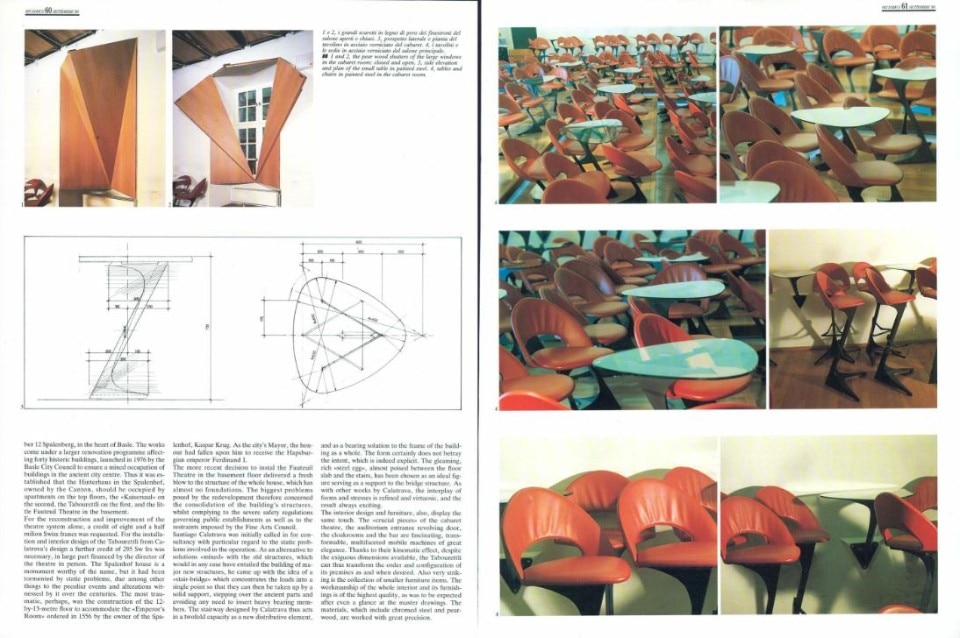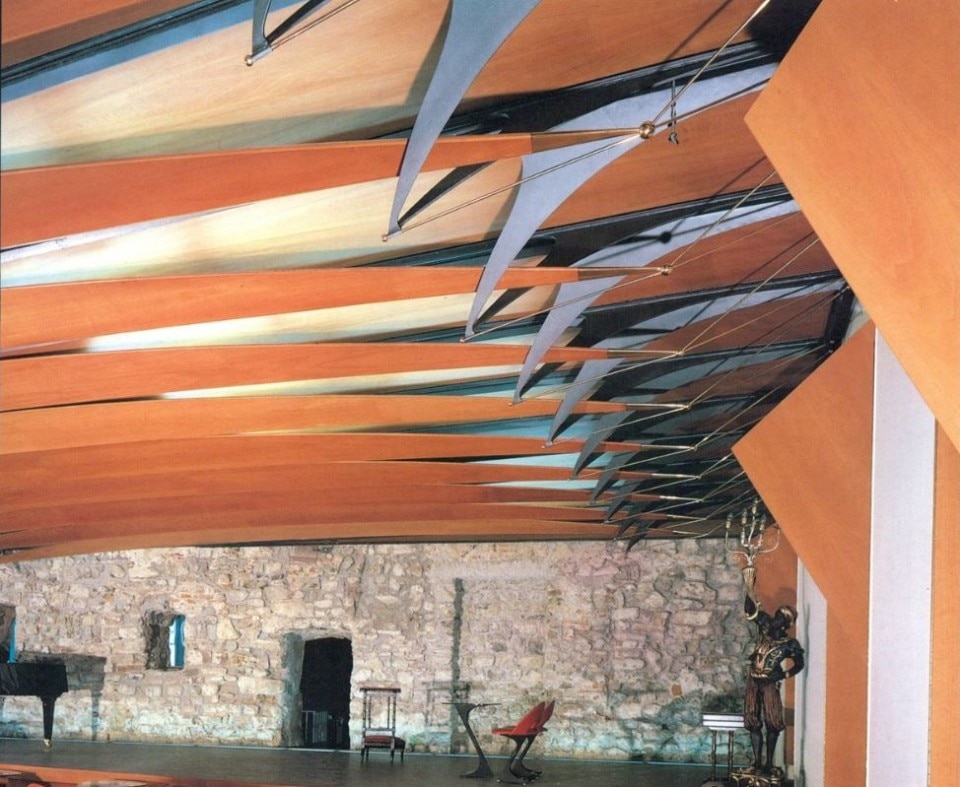In the collective imagination, associating the name of Santiago Calatrava with images of large biomorphic structures, of statically daring stations, airports, bridges, is almost an automatism. Large functional surfaces often covered or supported by a single, sculptural organic form: it is no accident that Calatrava’s education included engineering and the plastic arts. But as in other almost legendary cases such as that of Pier Luigi Nervi, it is interesting to discover the times when these figures tried their hand at other scales of design such as houses, small buildings, even interiors. In Calatrava’s career we can spot a very special case: a cabaret. An architecture for interiors, featuring a fair number of structural feats, in Basel, Switzerland. Domus featured it in September 1988, on issue 697.
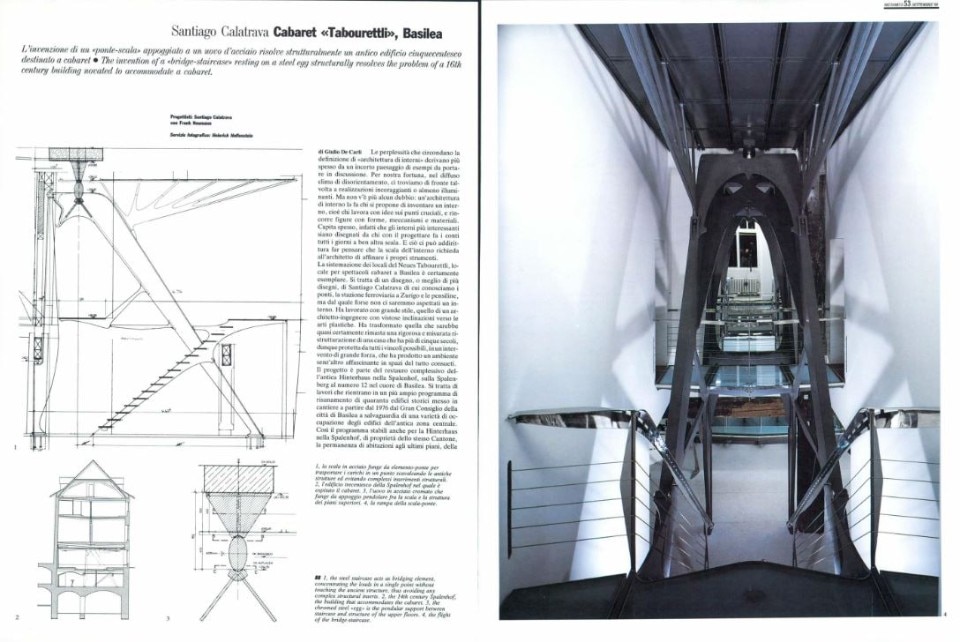
Cabaret “Tabourettli”, Basilea
The perplexity surrounding the definition of “interior architecture” stems, more often than not, from an uncertain landscape of examples to be referred to. Luckily however, this widespread bewilderment is relieved from time to time by encouraging or at least enlightening achievements. There is no doubt at all any more that interior design is the work of someone determined to invent it and with clear ideas about its crucial points, in pursuit of figures with forms, mechanisms and materials. The most interesting interiors in fact often happen to be by practitioners accustomed to wrestle daily with designing on a much larger scale. Which may even suggest that the scale of an interior requires the architect to sharpen his tools.
The design of the Neues Tabourettli, the cabaret theatre in Basle is certainly exemplary in this respect. It is the result of a design, or designs, by Santiago Calatrava, whose bridges, the railway station in Zurich, and cantilever roofs are familiar to us, but from whom we might perhaps not have expected an interior. He has worked with great style - that of an architect-engineer with a strong inclination for the plastic arts. He has transformed what would almost certainly otherwise have become merely the rigorous and measured restructuring of a house more than five centuries old, and hence protected by every possible restriction, into a compelling work that has created a fascinating atmosphere out of quite normal spaces.
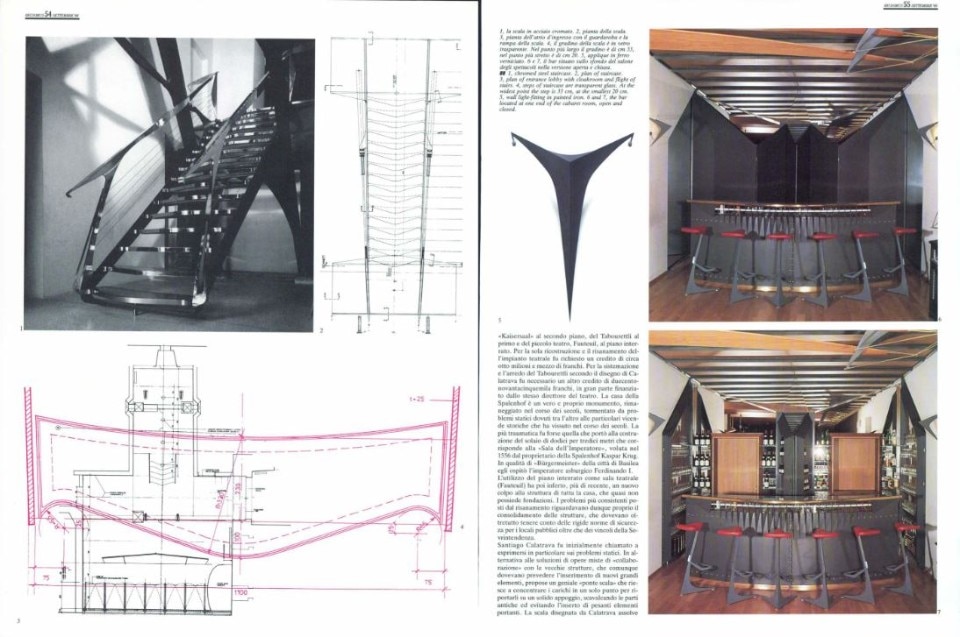
The design is part of the complete restoration of the ancient Hinterhaus in the Spalenhof, at number 12 Spalenberg, in the heart of Basle. The works come under a larger renovation programme affecting forty historic buildings, launched in 1976 by the Basle City Council to ensure a mixed occupation of buildings in the ancient city centre. Thus it was established that the Hinterhaus in the Spalenhof, owned by the Canton, should be occupied by apartments on the top floors, the “Kaisersaal” on the second, the Tabourettli on the first, and the little Fauteuil Theatre in the basement.
For the reconstruction and improvement of the theatre system alone, a credit of eight and a half milion Swiss francs was requested. For the installation and interior design of the Tabourettli from Calatrava’s design a further credit of 295 Sw frs was necessary, in large part financed by the director of the theatre in person. The Spalenhof house is a monument worthy of the name, but it had been tormented by static problems, due among other things to the peculiar events and alterations witnessed by it over the centuries. The most traumatic, perhaps, was the construction of the 12-by-13-metre floor to accommodate the “Emperor’s Room” ordered in 1556 by the owner of the Spalenhof, Kaspar Krug. As the city’s Mayor, the honour had fallen upon him to receive the Hapsburgian emperor Ferdinand I.
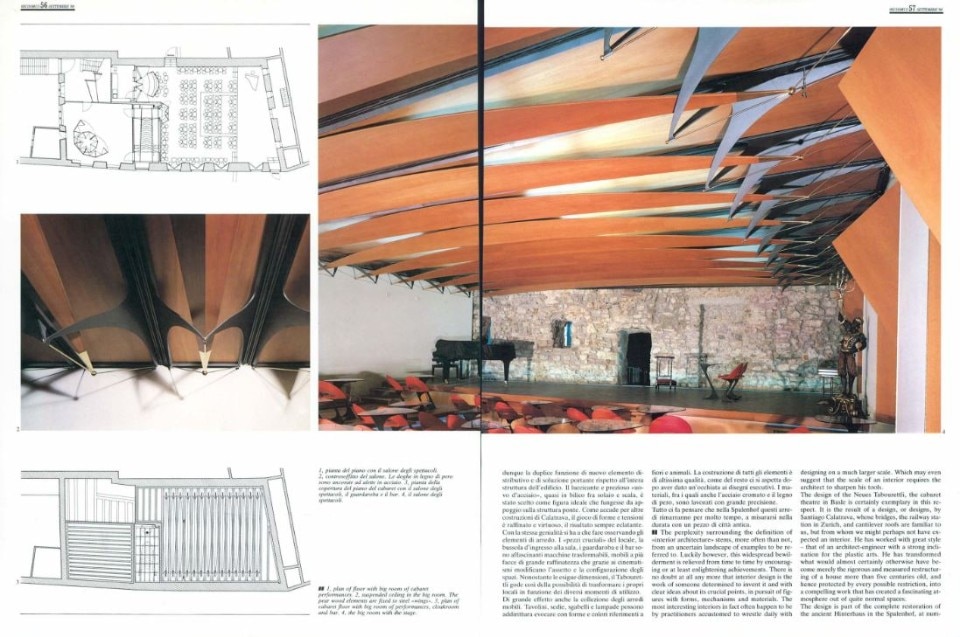
The more recent decision to install the Fauteuil Theatre in the basement floor delivered a fresh blow to the structure of the whole house, which has almost no foundations. The biggest problems posed by the redevelopment therefore concerned the consolidation of the building’s structures, whilst complying to the severe safety regulations governing public establishments as well as to the restraints imposed by the Fine Arts Council.
Santiago Calatrava was initially called in for consultancy with particular regard to the static problems involved in the operation. As an alternative to solutions “mixed” with the old structures, which would in any case have entailed the building of major new structures, he came up with the idea of a “stair-bridge” which concentrates the loads into a single point so that they can then be taken up by a solid support, stepping over the ancient parts and avoiding any need to insert heavy bearing members. The stairway designed by Calatrava thus acts in a twofold capacity as a new distributive element. and as a bearing solution to the frame of the building as a whole. The form certainly does not betray the intent, which is indeed explicit. The gleaming, rich “Steel egg”, almost poised between the floor slab and the stairs, has been chosen as an ideal figure serving as a support to the bridge structure. As with other works by Calatrava, the interplay of forms and stresses is refined and virtuosic, and the result always exciting.
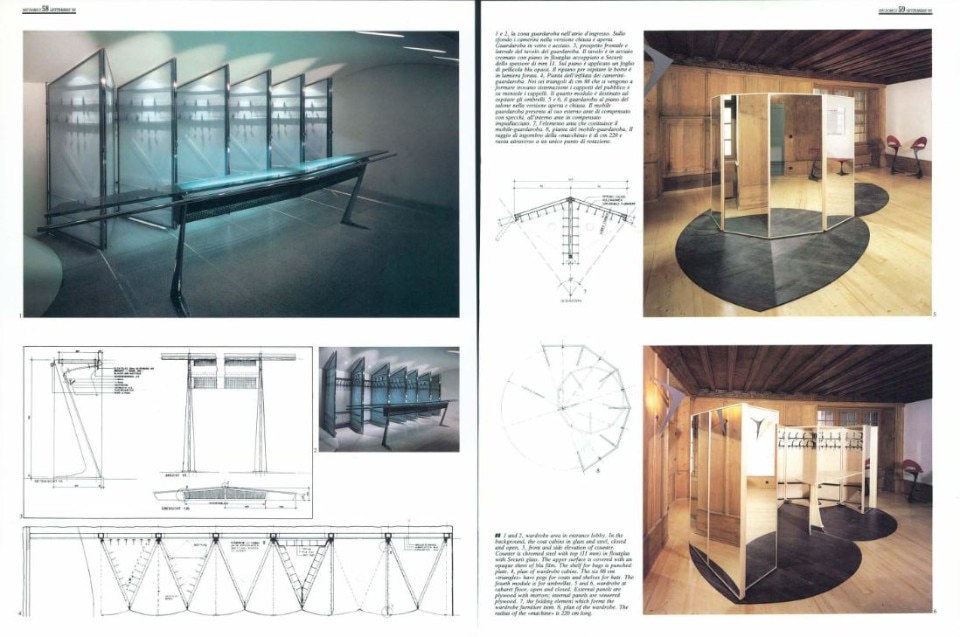
The interior design and furniture, also, display the same touch. The “crucial pieces” of the cabaret theatre, the auditorium entrance revolving door, the cloakrooms and the bar are fascinating, transformable, multifaceted mobile machines of great elegance. Thanks to their kinematic effect, despite the exiguous dimensions available, the Tabourettli can thus transform the order and configuration of its premises as and when desired. Also very striking is the collection of smaller furniture items. The workmanship of the whole interior and its furnishings is of the highest quality, as was to be expected after even a glance at the master drawings. The materials, which include chromed steel and pear-wood, are worked with great precision.
